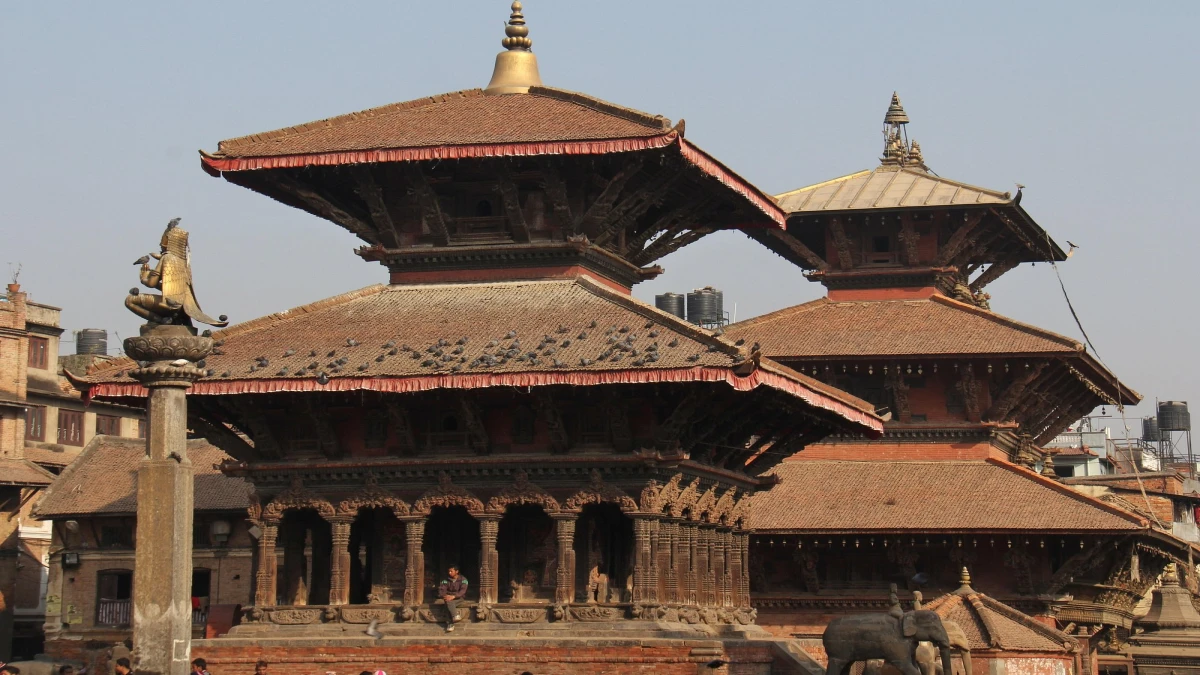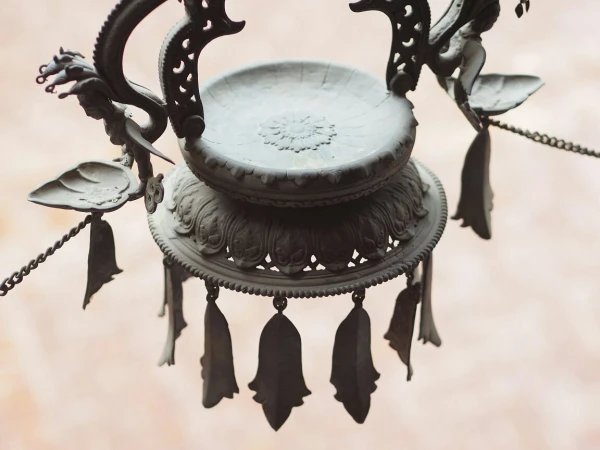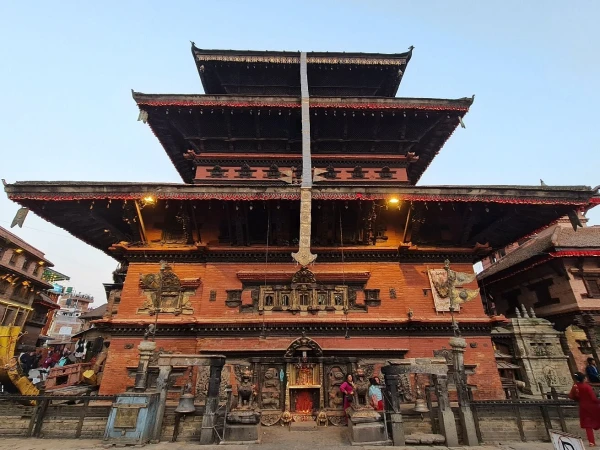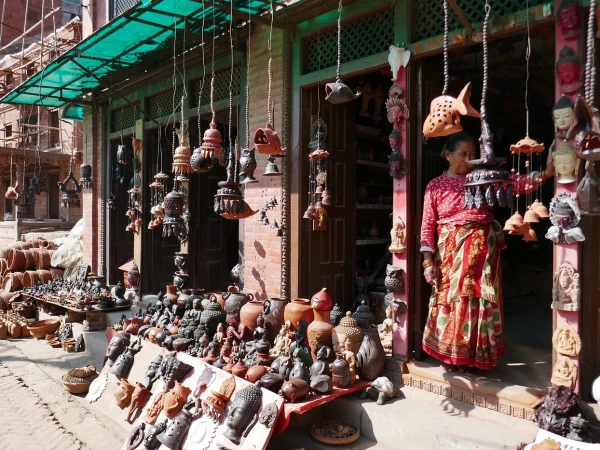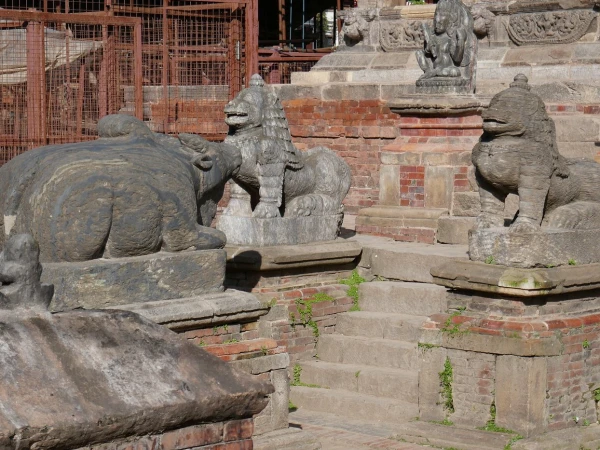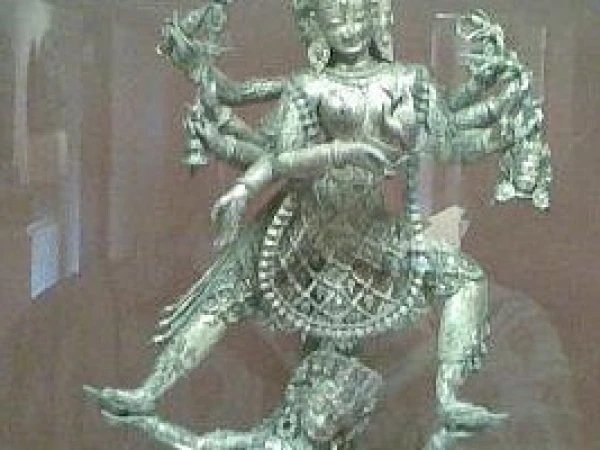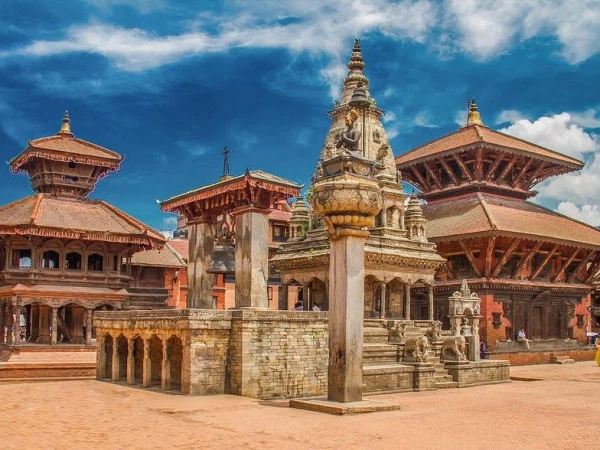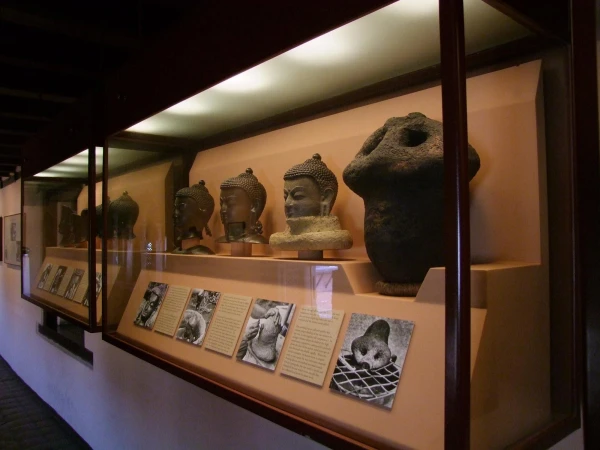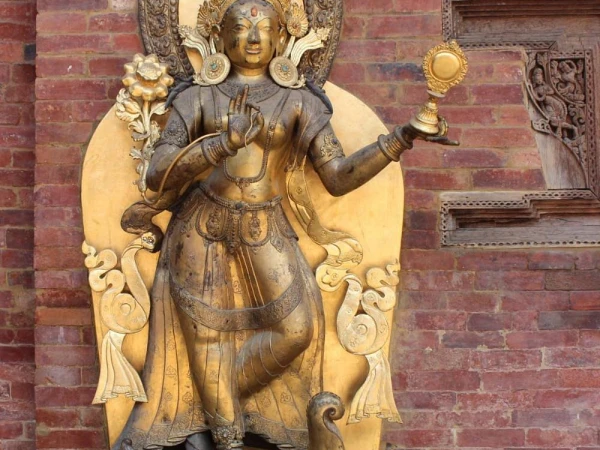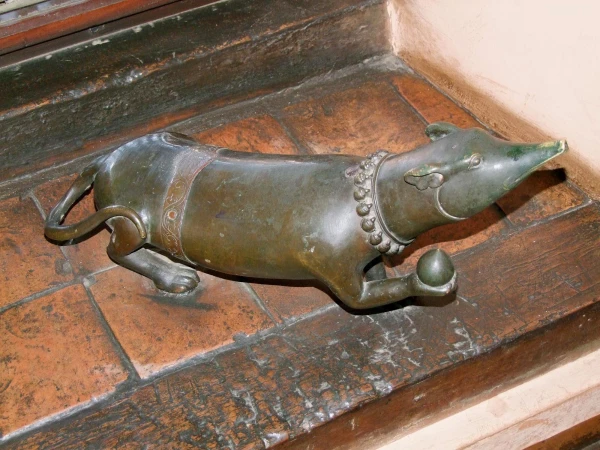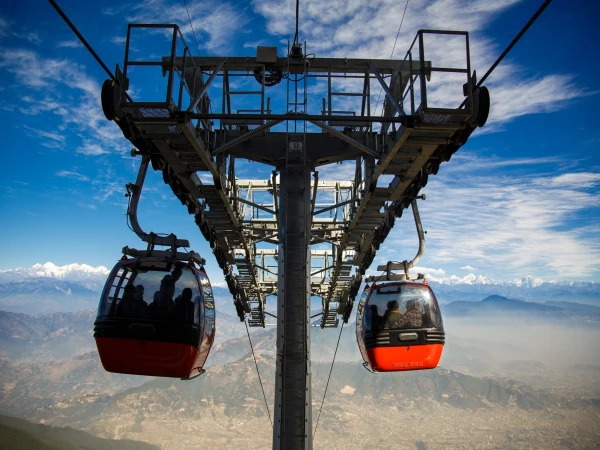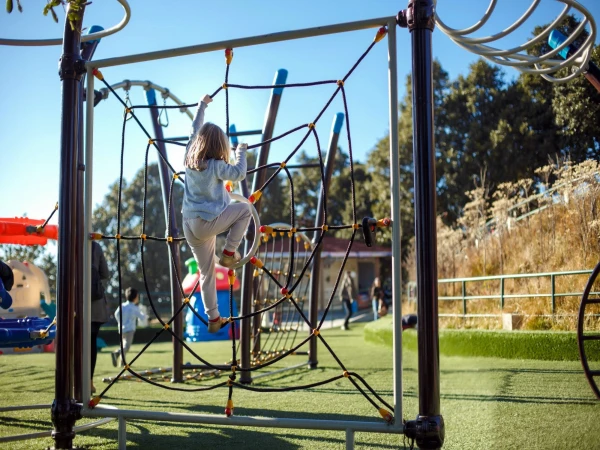Overview of Tour
Discover the living heritage of Nepal through a day tour to Bhaktapur and Patan, two of the most culturally and artistically rich ancient cities in the Kathmandu Valley. Once independent kingdoms with their own kings and cultures, these cities are now UNESCO-listed World Heritage Sites, famous for their exquisite architecture, artistic mastery, and timeless traditions.
Though just a day long, this tour will transport you centuries back into Nepal’s glorious past. Walk the alleyways, enter courtyards, and witness the marvels of Newari craftsmanship as you explore the best of Nepal’s medieval cities.
Highlights of the Day Tour:
Visit two UNESCO World Heritage Sites in one day
Explore centuries-old temples, palaces, courtyards, and museums
Experience authentic Newari architecture, wood carvings, and metalwork
Walk through living history, still vibrant with local life and tradition
Bhaktapur Durbar Square "The City of Devotees"
Bhaktapur retains its medieval charm with brick-paved streets, traditional houses, and thriving crafts. Here are the top attractions you’ll visit:
Nyatapola Temple (Taumadhi Tole)
The Nyatapola Temple in Bhaktapur is the tallest temple in Nepal, standing proudly at five stories and approximately 30 meters high. Built in 1702 AD by King Bhupatindra Malla, this architectural marvel is not only a symbol of Bhaktapur’s artistic excellence but also of its cultural resilience. The temple is renowned for its intricate wooden carvings and the massive stone guardians that line its staircase—each pair believed to be ten times stronger than the one below. Dedicated to the goddess Siddhi Lakshmi, the temple showcases perfect symmetry and proportions, making it a masterpiece of Newari pagoda architecture. Despite the devastating earthquake of 2015, Nyatapola remarkably sustained only minor damage, a testament to the strength and advanced engineering of its time. Today, it remains a towering icon of Bhaktapur's spiritual and artistic heritage.
Bhairabnath Temple
The Bhairabnath Temple, located in the heart of Bhaktapur's Taumadhi Tole, is dedicated to Bhairab, a fierce and powerful manifestation of Lord Shiva. This striking triple-roofed pagoda-style temple is a key religious and cultural site, especially prominent during the celebrated Bisket Jatra festival. In front of the temple, you’ll find two massive wooden chariot wheels, which are used annually to pull the enormous chariot carrying the image of Bhairab through the narrow streets of Bhaktapur in a grand, energetic procession. The temple is not only an architectural beauty but also a symbol of Bhaktapur’s living heritage, playing a vital role in the city's vibrant festival traditions and community rituals.
Til Mahadev Narayan Temple
The Til Mahadev Narayan Temple is a small yet deeply sacred double-roofed temple tucked away behind the bustling main square of Bhaktapur. Despite its modest size and somewhat hidden location, it holds great spiritual importance for local devotees. The temple is especially known for the impressive Garuda statue—the mythical bird and mount of Lord Vishnu—positioned nearby, which adds to the temple’s religious significance. Pilgrims and worshippers consider this temple an essential part of their spiritual journey, making it a quiet but meaningful stop amidst the vibrant heritage of Bhaktapur.
Pottery Square
Pottery Square in Bhaktapur is the traditional heart of the city’s pottery-making industry, where generations of artisans have shaped clay into beautiful, functional pots and vessels. Here, you can watch skilled potters spinning clay on their foot-powered wheels, expertly molding each piece by hand. After shaping, the pots are carefully arranged in the sun to dry naturally, creating a vibrant, earthy scene full of activity and craftsmanship. This lively area offers a wonderful opportunity to capture authentic cultural moments and photographs, showcasing the timeless art and daily life of Bhaktapur’s artisan community.
Bhaktapur Durbar Square
Bhaktapur Durbar Square is home to the ancient royal palace, a majestic complex that once housed the Malla kings who ruled the city. The square is richly adorned with numerous shrines and statues, each telling stories of Bhaktapur’s deep religious and cultural heritage. Among its most famous features are the Golden Gate, an intricately gilded entrance considered a masterpiece of traditional Nepalese metalwork, and the 55-Window Palace, renowned for its beautifully carved wooden windows and detailed craftsmanship. Together, these elements make the Durbar Square an open-air museum that vividly showcases the finest examples of Newar art, architecture, and history, inviting visitors to step back into the city’s glorious medieval past.
Patan Durbar Square "The City of Fine Arts"
Separated from Kathmandu by the Bagmati River, Patan (Lalitpur) is a treasure trove of artistic and architectural wonders. Formerly an independent kingdom, Patan still holds its cultural pride in every brick.
Patan Durbar Square
Patan Durbar Square is the site of the ancient royal palace complex once occupied by the Malla kings, serving as the political and cultural heart of the city. This area stands as a center of Newari architecture, renowned for its exquisite craftsmanship, intricate wood carvings, and harmonious design that beautifully blend artistry with spirituality. The square is dotted with numerous temples and shrines, each dedicated to various Hindu and Buddhist deities, reflecting Patan’s deep religious devotion. Surrounding these sacred structures are artistically designed courtyards, where traditional ceremonies and daily rituals continue to take place, making Patan Durbar Square a vibrant hub of cultural heritage and living history.
Krishna Mandir
The Krishna Mandir is an iconic stone temple in Patan, built in 1637 AD by King Siddhinarsingh Malla. It stands out as a prime example of Shikhara-style Indian temple architecture, characterized by its tall, pyramidal tower made entirely of finely carved stone, a rarity in Nepal where most temples are traditionally constructed from brick and wood. The temple’s intricate stone carvings vividly depict scenes from the great Hindu epics—the Mahabharata and the Ramayana—offering both spiritual and artistic significance. Due to its sacred status, entry to the temple is restricted to Hindus only, preserving its religious sanctity.
Patan Museum
The Patan Museum, located within the Keshav Narayan Chowk of the ancient royal palace, is renowned for housing one of Nepal’s finest collections of Hindu and Buddhist artifacts. This museum offers visitors a profound journey into Nepali religious art and symbolism, showcasing exquisitely crafted statues, ritual objects, and ancient artworks that reflect the rich spiritual heritage of the Kathmandu Valley. Its carefully curated exhibits and beautifully preserved architecture have earned it recognition as one of the top museums in Asia, making it a must-visit destination for anyone interested in the cultural and religious history of Nepal.
Bhimsen Temple
The Bhimsen Temple is dedicated to Bhimsen, the revered god of commerce and trade. This temple holds special significance for the Newar merchant community, who worship Bhimsen to seek blessings for prosperity and success in their business endeavors. As a vital cultural and religious site, the temple reflects the deep connection between spirituality and daily life in Patan’s trading traditions.
Other Attractions:
Taleju Temple – Royal temple of the Malla kings
Sundari and Mul Chowks – Courtyards with sacred architecture
Tusha Hiti – A royal sunken bath with ornate carvings
Taleju Bell, stone spouts, and street statues
Tour Experience
These cities are best explored on foot. Walking through the narrow alleys connecting one courtyard to another gives you an immersive experience of daily life, art, and ancient stories. You’ll encounter local artisans, bustling marketplaces, and historic treasures at every corner.
This day tour is ideal for:
Cultural and history lovers
Photographers and architecture enthusiasts
- Travelers with limited time but a deep interest in heritage
General Cultural & Touristic:
Local Artisan Workshops
Bhaktapur and Patan are famous for traditional crafts like pottery, wood carving, metalwork, and thanka painting.
Visitors can watch artisans at work or purchase authentic souvenirs.
Festivals & Rituals
- Mention the vibrant festivals like Bisket Jatra in Bhaktapur or Krishna Janmashtami in Patan, which bring these squares alive with cultural performances and rituals.
Local Food & Markets
Both cities have traditional Newari cuisine and bustling markets that visitors can explore during their tour.
Bhaktapur and Patan Day Tour Itinerary
Start: 10:00 AM from your hotel.
Drive about 1 hour to Bhaktapur Durbar Square. Visit Nyatapola Temple, other temples, the palace, and end at Pottery Square to see traditional pottery making.
Then, drive 30 minutes to Patan Durbar Square. Explore the Krishna Mandir, temples, courtyards, and monuments.
Return to your hotel after the tour.
Note: Tour duration may vary with traffic.
